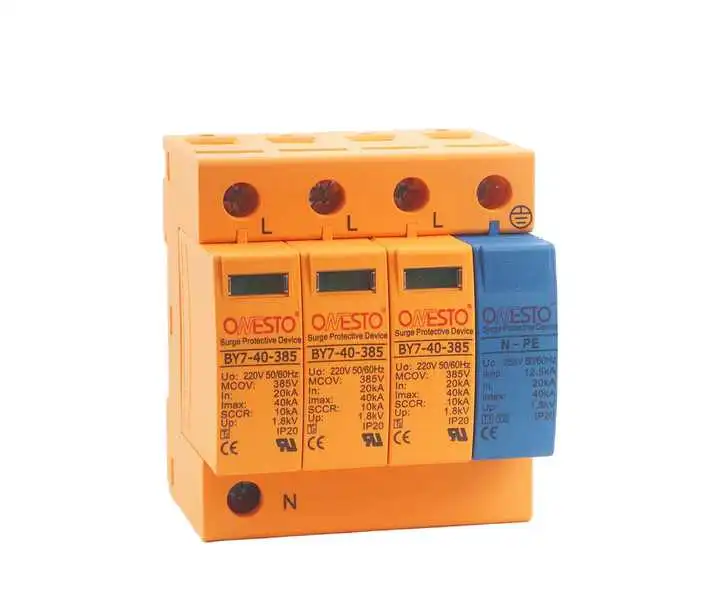When choosing surge protectors, the dimensions of surge protectors are not just about aesthetics. It’s essential to find the right one for your devices. Consider what you’re protecting and how frequently surges occur. For instance, whole-house surge protectors safeguard everything, while smaller plug-in ones only protect specific devices.
The dimensions of surge protectors also play a crucial role. Some are designed to fit in compact spaces, while others require more room. Selecting the appropriate size ensures your devices remain safe and your space stays organized.
Key Takeaways
-
Pick the right surge protector size for your needs. Whole-house ones protect everything, while plug-in ones protect single items.
-
Learn about joule ratings. More joules mean better protection. Match the rating to your devices’ value for safety.
-
Check for UL certifications. Certified protectors follow safety rules and work well.
-
Think about hiring a pro for whole-house protectors. This keeps it safe and protects the warranty.
-
Check your home’s panel and devices. Bigger homes need stronger protectors for more devices and surges.
Understanding Surge Protector Ratings

Knowing surge protector ratings is very important. These ratings show how well a surge protector can guard your devices from power surges. Let’s break down the basics.
Joules and Their Role in Protection
Joules measure how much energy a surge protector can absorb. Think of it like the protector’s strength. Higher joules mean it can handle more energy before breaking. For example:
-
Low joule ratings (200-400): Good for small items like lamps or clocks.
-
Medium joule ratings (600-1000): Great for home office gear like computers or printers.
-
High joule ratings (2000 and above): Best for pricey or delicate devices like TVs or fridges.
If your area has lots of power surges, pick a surge protector with higher joules. It keeps your devices safe even during repeated surges.
Tip: Match the joule rating to the value of your devices. More protection is always better than less.
Voltage, Amperage, and kA Ratings
Surge protectors also have ratings for voltage, amperage, and kA (kiloampere). These tell you how much power the protector can handle and how well it works. Here’s what to know:
-
Modes of Protection: Choose protectors that guard all lines (L-N, L-G, N-G). This gives full protection.
-
Maximum Surge Current Capacity (kA): Shows the biggest surge it can handle. Higher kA means better performance.
-
Voltage Protective Rating (VPR): Tells the voltage that can still pass through after protection. Lower VPR is better.
-
Maximum Continuous Operating Voltage (MCOV): Should be over 115% of your system’s voltage for good performance.
These ratings help you find a surge protector that fits your home’s electrical system and devices.
Importance of UL Certifications and Safety Standards
Safety is key when picking surge protectors. UL certifications ensure the product meets strict safety rules. UL (Underwriters Laboratories) tests surge protectors for quality and safety. Here’s why it matters:
|
Feature |
Why It’s Important |
|---|---|
|
Confirms safe use and good performance through tough testing. |
|
|
End-of-life Characteristics |
Shows how protectors act under stress and their effect on systems. |
|
Common Testing Format |
Gives a clear way to compare different protectors for reliability. |
|
Listed vs. Component Recognized |
Helps you understand safety and performance levels for better choices. |
Always look for UL 1449 certification when buying surge protectors. It proves the product is safe and reliable. Avoid uncertified ones—they might not protect well and could cause fires.
Note: Certified surge protectors keep your devices safe and give you peace of mind.
Choosing the Right Surge Protector for Your Needs
Dimensions of Surge Protectors and Their Applications
Surge protector size is important for fitting and working well. Different types have different sizes based on their use. Small plug-in surge protectors fit tight spaces like behind desks. They are light, easy to move, and work for single devices. Whole-house surge protectors are bigger and connect to your electrical panel. These need more space and professional setup.
Think about where you’ll use the surge protector. For one device, like a laptop, a small plug-in model is fine. To protect your whole home, choose a whole-house surge protector. Its larger size handles more energy and protects many circuits.
Tip: Measure the space before buying a surge protector. This helps you pick one that fits without blocking other items.
Whole-House Surge Protector vs. Plug-In Options
Deciding between whole-house and plug-in surge protectors depends on your needs. Whole-house surge protectors cover all devices and connect to your electrical panel. Plug-in surge protectors focus on single devices and are better for small electronics.
Whole-house surge protectors are stronger and last longer. For example:
-
A retired engineer said their whole-house surge protector stopped damage from power issues. Plug-in ones failed quickly.
-
Neighbors using only plug-in protectors lost TVs and ovens during surges.
Whole-house surge protectors handle bigger surges and are more reliable. Plug-in models are handy but less durable. If your area has many surges, a whole-house surge protector can save money on repairs.
Matching Surge Protector Ratings to Your Devices
Surge protector ratings help you pick the right one for your devices. Ratings like joules and clamping voltage show how well it protects. Match these ratings to your devices for the best safety.
Here’s what the ratings mean:
|
Metric |
What It Means |
|---|---|
|
Clamping Voltage |
The voltage level when the surge protector starts protecting devices. |
|
Energy Absorption/Joules |
How much energy the surge protector can take before failing. |
|
Let-Through Voltage |
The leftover voltage after a surge, showing its effectiveness. |
|
Short Circuit Ratings (SCCR) |
The highest fault current the protector can handle safely. |
|
Voltage Protection Ratings (VPR) |
The most voltage allowed to pass through the surge protector. |
|
Peak Surge Current |
The biggest surge current the protector can handle. |
|
MCOV |
The highest voltage the protector can handle continuously. |
|
Certifications |
Safety and performance standards the surge protector meets. |
|
Warranty |
The company’s promise about the product’s reliability. |
For expensive devices like TVs, pick a surge protector with high joules and low clamping voltage. This keeps your device safe during surges. Always check certifications and warranties for trustworthiness.
Note: Matching surge protector ratings to your devices helps protect them and makes them last longer.
Things to Think About Before Buying
When buying a surge protector, don’t just pick the first one. You need to think about a few important things to get the best protection for your home and devices.
Home Size and Electrical Panel Strength
The size of your home and your electrical panel matter a lot. Bigger homes have more devices, so they need stronger surge protectors. Check your electrical panel’s amperage. Most newer homes have panels rated at 150 to 200 amps. If your panel is smaller, pick surge protectors that match your power needs.
Here’s a simple guide:
|
Factor |
What to Check |
|---|---|
|
Panel Size |
Look at your panel’s amperage; most homes have 150- to 200-amp panels. |
|
Surge Frequency |
If storms or power issues happen often, get higher-rated surge protectors. |
|
UL Certification |
Make sure the surge protector meets UL 1449 safety standards. |
Tip: Live in a stormy area? Whole-house surge protectors give better coverage.
Device Types and Power Needs
Different devices need different levels of protection. Big appliances like fridges or home theaters need surge protectors with high kA ratings. These ratings show how much energy the protector can handle. For small items like lamps or phone chargers, basic plug-in protectors work fine.
If you’re protecting many devices, choose a surge protector with more outlets and higher joules. This keeps everything safe during big surges.
Indoor vs. Outdoor Use
Where you’ll use the surge protector is also important. Indoor surge protectors are good for offices, TVs, or kitchen gadgets. Outdoor ones are made to handle weather. They’re great for outdoor lights, cameras, or pool equipment.
Pick a surge protector made for your space. Outdoor models often have weatherproof covers to protect them from rain or dust.
Note: Always check the label to see if it’s for indoor or outdoor use.
Professional Installation for Whole-House Surge Protectors

Why Professional Installation is Important
Putting in a whole-house surge protector isn’t a simple task. It connects to your home’s electrical panel, which can be risky. Without the right skills, you could get hurt. A licensed electrician knows how to do this safely. They have the tools and training to avoid dangers like shocks or short circuits. This keeps you and your home safe.
Hiring a professional also makes sure the surge protector works correctly. Electrical systems are tricky, and mistakes can cause problems or even fires. A pro reduces these risks and gives you peace of mind. Some surge protectors also need professional installation to keep their warranties. If you install it yourself, you might lose the warranty and device protection.
|
Reason for Professional Installation |
Why It Matters |
|---|---|
|
Safety |
Electricians prevent accidents with the right tools and skills. |
|
Complex Systems |
Pros make sure it fits your home’s setup perfectly. |
|
Warranty Protection |
Keeps the surge protector’s warranty valid. |
Avoiding Installation Errors
Mistakes during installation can be costly and unsafe. A common error is picking the wrong surge protector for your panel. Another mistake is skipping voltage and connection tests after setup. These errors leave your home unprotected from surges.
A professional avoids these problems by checking your home’s electrical system first. They’ll test the panel, connections, and safety features. This careful work ensures your surge protector works well and protects your devices.
Tip: Ask your electrician to explain the setup. It helps you understand how the surge protector works.
How to Find a Good Electrician
Finding a skilled electrician doesn’t have to be hard. Start by asking for reviews or examples of their past jobs. This shows their experience and quality. Make sure they know how to handle your surge protector model. Different models may need special care.
Choose electricians who offer a detailed plan before starting. They should check your home’s system and explain the process. Clear pricing and good communication are also important. A good electrician will answer your questions and make you feel confident in their work.
Checklist for Choosing an Electrician:
Ask for reviews or references.
Confirm they know your surge protector model.
Look for clear pricing and communication.
By hiring a skilled electrician, you’ll get safe and proper installation for your surge protector.
Picking the right surge protector helps keep your devices safe. Think about its size, ratings, and if you need a whole-house or plug-in type. Certified surge protectors are safer and more reliable. Hiring a professional ensures proper setup and smooth operation. Choose one that fits your needs to avoid damage and expensive repairs.
FAQ
What’s the difference between a surge protector and a power strip?
A surge protector guards devices from power surges. A power strip only gives extra outlets. Surge protectors have joule ratings and safety certifications. Power strips don’t protect against surges.
What does the joule rating on a surge protector mean?
The joule rating shows how much energy it can handle. Higher joules mean stronger protection. For example, use 2000+ joules for expensive items like TVs or consoles.
What happens if I pick the wrong surge protector?
The wrong surge protector might not protect your devices. A low-rated one could fail during a big surge. Always match the protector’s ratings to your devices and system.
Can I install a whole-house surge protector myself?
No, it’s not safe. Whole-house surge protectors connect to your electrical panel. This job needs a professional electrician. They ensure safety and keep warranties valid.
What should I check for in an outdoor surge protector?
Outdoor surge protectors must be weatherproof and strong. Look for ones with covers and UL certifications. These features make them safe and reliable outside.
The following information may be of interest to you
How to Replace a Surge Protector Safely and Efficiently
What size surge protector for 200 amp service
What You Need to Know About Surge Protection Device Lifespan
How to Test Surge Protection Devices for Optimal Performance



